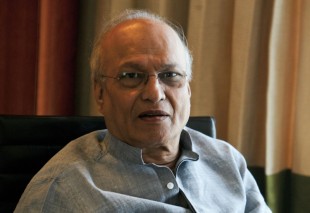

Interview: Newby Teas of London

How did you end up in the tea industry?
Getting into tea was by accident. It’s my first love, but I got into other businesses. However, in 2000, seeing the total destruction of tea culture, I had to share what I knew and try to revive it.
Why do you think fine tea is fading?
It is so sad that every single international brand of tea in the world is trying to promote ‘tea’ as ‘fine tea’. To me, this is criminalisation. It is deceitful because they are trying to pass something which is not worth it, and fooling innocent consumers through the media of marketing. There is no company in existence in the world which cares to put their efforts into preserving the tea history.
How can tea be preserved properly?
Common people don’t realise that the biggest enemy of fine tea is heat, exposure to light, humidity, and pollution, which includes contamination. The tragedy is that so many small companies have come into the business without understanding this concept. They just simply buy tea and pack it with a job factory.
Is this a consumer-awareness problem? Will people demand fine teas?
Yes, the internet is helping people to understand the reality. Most people drink teas at restaurants and hotels. But the mission of some outlets is not to serve fine tea but to charge the maximum by providing them the ambiance and finding the cheapest tea in which the consumer will add some milk, sugar or lemon. So they will not be able to tell the difference between good and bad tea. The money is paid, and the consumer is not demanding fine tea, but fine ambiance.
We have heard about Newby’s tea collection; tell us about this?
A lifetime is not good enough to teach people what has been destroyed in the last 100 years. So we have decided to invest heavily in the heritage, art, and tea culture. Once people start seeing the tea museum we are creating, they will see how precious tea was and how commercial companies have destroyed that culture because they are so obsessed with making money. The amount of money we are investing in our tea museum, other companies don’t even have working capital. It takes multi-million dollars of investment and it already has run into tens of millions.
What can enthusiasts expect to find in the museum?
Some of the objects in the collection are worth a million dollars apiece. It has only accessories for tea; teaspoons, tea strainers, tea caddies, tea pots, tea urns, and samovars. This collection doesn’t have tea aprons and tea paintings or napkins. That we have left for the big museums. The problem with bigger museums is some objects are untested and being promoted as 8th, 9th, or 10th century, up to 15th century, but they all part of 21st century production. There is no authentication, and the public is being fooled. Ours is the most unique collection in the world today and will retain its position forever. The objects are from 2nd Century BC up to the 19th Century from all over the world. These pieces were created by the great silversmithies like Paul Store, Benjamin Smith, Fabergé, Maurice Hammer of Norway, Walliam Newland from Ireland, Kuzmichev, and Tegelsten.
Finally, can you tell us about your own contributions to design in the industry?
We have created teapots with yellow diamonds, ruby, emeralds, silver and gold. This is a creation for the 21st century, and are my own designs.